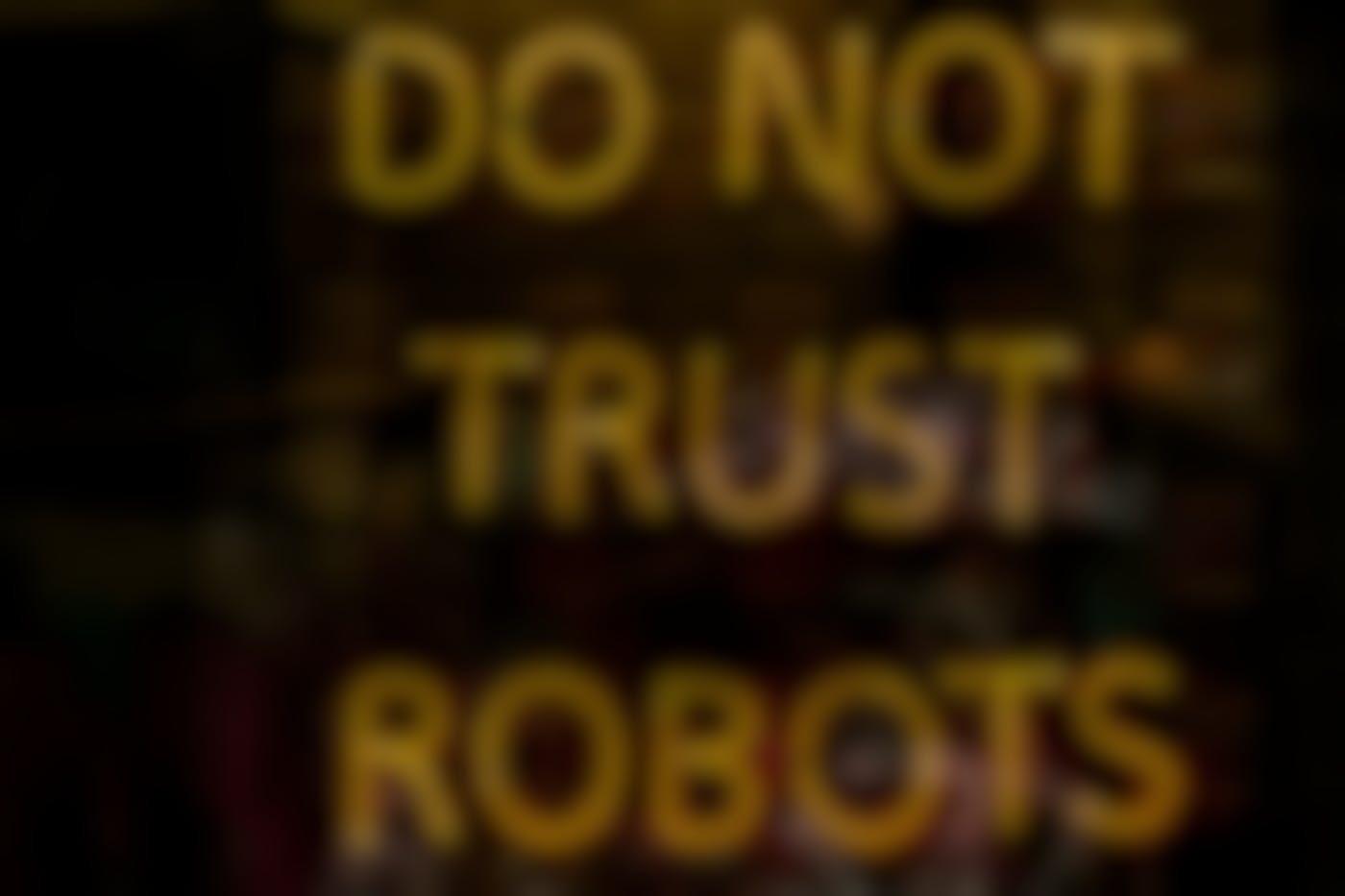

But if you think it’s bad for normal people and clueless world leaders, what does this influx of AI slop do to brands? How do brands fight against the deepfake? And what if they don’t?
The sad truth is there are no beautiful Russian ladies waiting to love me, nor did a Nigerian prince really need my help for which he promised me one million dollars. I know this because those two scams have been around forever. I’ve received the emails, I’ve seen the YouTube videos: women just sitting alone in the Russian tundra, thinking about me, dreaming of cooking my meals and keeping my house clean while giving me the kind of love you only find in those beach novels you finish in an afternoon—and then immediately have to “cool off” in the water.
Those scams are ancient and pathetic compared to the newest craze: AI deepfakes.
How can my generation compete when all we had were emails? It’s like trying to scam someone with a telegraph. You’d have to stand beside the poor guy translating all the dots and dashes. “Apparently, sir, she is a young and beautiful Russian woman who wants to clean your house and love you a… ling time. Sorry, sir, my mistake—long time, she’ll love you a long time.”
Email was a step up from snail mail. Now, AI is a leap far beyond both. So what’s a person to do when AI slop floods the zone, and even our leaders can’t tell the difference between what’s real and what’s fake—even when they themselves are the ones starring in the fake video? It’s all very disturbing.
But if you think it’s bad for normal people and clueless world leaders, what does this influx of AI slop do to brands? How do brands fight against the deepfake? And what if they don’t? What if they decide to lean into it? Does that change their audience? Do they lose points, or have we all just accepted that the Nigerian prince really is a billionaire, so of course he’d use AI?
From Emails to AI: Why Deepfakes Hit Different
Back in the day, scams had some dignity. A Nigerian prince, sure—that’s ridiculous. But at least it was personal. He reached out to me directly, through email, promising riches beyond my wildest dreams. I felt special. Me! Out of everyone in the world, I was chosen to help this poor royal move money around.
Then came the Russian brides. Again, very flattering. These ladies were allegedly crossing tundra in fur-lined boots, clutching photos of me, whom they’d never seen, just waiting to cook my meals, clean my house, and love me forever—or at least until their visa paperwork cleared.
These scams had personality. They had charm. They were handcrafted cons, like a letterpress invitation to a wedding you didn’t know you were attending.
But now? Now we’re not dealing with poorly written emails or blurry photos of Russian tundra. We’re dealing with high-definition, photorealistic fakes. Your favorite actor selling crypto they’ve never heard of. Your boss telling you to wire money to an “urgent vendor.” The President saying… things he never said, in perfect lip-sync, broadcast across your feed before fact-checkers can blink.
It’s like going from a handwritten ransom note—letters cut out of a magazine—to a full Netflix series, cast and shot on location, starring a digital clone who looks and sounds exactly like the real person. And you don’t even have to squint.
That’s what makes deepfakes dangerous. They don’t just trick people who are already gullible enough to believe in fairytale princes. They trick everyone. Smart people. Skeptical people. Even people who should know better. Because your brain trusts what your eyes and ears tell you—and AI has learned how to hijack both.
And unlike the spam folder where Nigerian princes go to die, there’s no spam filter for deepfakes. They hit you where you live: on your phone, in your feed, in the middle of your scrolling session, where you’re half paying attention and your guard is down.

Leaders, Dupes, and the Flood of AI Slop
If you think this only affects the gullible masses, think again. The truth is, nobody’s safe—not even world leaders. These are people with entire intelligence agencies at their fingertips, people who receive daily briefings thicker than most novels, and yet, they’re still getting played by AI slop.
It’s not hard to see why. Politicians live in the adrenaline rush of the news cycle. Something drops—a clip, a statement, a video—and they have seconds to respond before the story overtakes them. By the time their staff fact-checks it, the leader has already condemned it, supported it, or quoted it. The damage is done.
And the kicker? Sometimes, the deepfake stars them. Imagine being a prime minister waking up to find a viral video of yourself declaring war on a neighboring country. It’s fake, of course, but it doesn’t matter. Stock markets tremble, citizens panic, headlines scream, and your political opponents gleefully retweet. Even if you go on live TV two hours later to deny it, half the population still believes you said it. Why? Because they saw you say it. Their eyes and ears don’t negotiate—they take it as fact.
This is the cruel genius of deepfakes: they exploit the oldest human shortcut in the book. For millennia, we’ve trusted what we see and hear. If a woolly mammoth were charging at you, you wouldn’t stop to wonder whether it was a well-rendered painting. You just ran. Our brains are wired for instant belief, not slow skepticism.
That wiring worked fine when the worst we had to worry about was propaganda posters or grainy doctored photos. You could usually spot the seams. The shadows didn’t line up, the perspective was wrong, or the mustache looked suspiciously pasted on. But AI? AI doesn’t make those amateur mistakes. AI creates fakes that are cleaner than reality. Sometimes reality looks like the fake.
And once that slop hits the zone—social media, news outlets, WhatsApp chains—there’s no pulling it back. It’s like dumping a bottle of dye into the ocean. You can dilute it, sure, but you’ll never make it clear again.
Now extend that logic past politics. Imagine CEOs, athletes, or celebrities falling victim. A deepfake of a company founder admitting to fraud could shave billions off the stock price in an afternoon. A fake video of a quarterback endorsing the rival team could ruin endorsements. Even something trivial—a musician saying they hate their fans—could implode a career built over decades.
Or worse: imagine the Pope in a fake video endorsing Yeezys, complete with a holy unboxing. Imagine Warren Buffett telling TikTok he’s putting it all in Dogecoin. Imagine Oprah saying, “You get a scam! You get a scam! Everybody gets a scam!” Absurd? Yes. Believable in the moment? Also yes.
And don’t think you’re immune just because you’re not famous. Ordinary people are targets too. Employees are already getting tricked by audio deepfakes of their boss, telling them to wire money “urgently.” Parents are receiving fake calls from their “kids” begging for help. The emotional lever gets pulled, and the rational brain never has time to intervene.
This is the world we live in now: a flood of AI slop where the line between real and fake is so blurred even the people in charge of reality—presidents, CEOs, parents—can’t tell which way is up.
Enter the Brands
If deepfakes can fool world leaders, you can bet they can fool customers. And customers are the lifeblood of brands. One fake video can do what thousands of bad Yelp reviews never could: collapse trust in a matter of minutes.
Think about it. You log onto YouTube, and there’s the CEO of your favorite sneaker company announcing a bold new initiative: socks made entirely from recycled hair. Not cotton. Not bamboo. Hair. You’re grossed out, but it looks real. The video is clean, the audio is crisp, and the CEO’s lips match the words perfectly. You don’t question whether he actually said it—you just question his sanity. And before the brand’s PR team has even logged onto Slack, screenshots and memes are spreading faster than wildfire.
Or take the fast-food world. Imagine a deepfake Ronald McDonald saying he’s shutting down the Big Mac because it “never tasted that good anyway.” Competitors would cheer, customers would riot, and brand loyalty would melt like ice cream in the desert. Even if the company issues a correction two hours later, two million TikToks will still be playing the fake clip with captions like: “McDonald’s finally admits it.”
This is the new nightmare for brands: trust erosion at hyperspeed. Years of carefully built reputation, billions in marketing spend, undone in one afternoon because some guy with a laptop and a grudge decided to make a fake.
And the worst part? Once it’s out there, you can’t stuff it back in the box. Truth moves at a crawl; fakes sprint like Usain Bolt. A brand can issue clarifications, denials, and polished press releases, but they’ll never catch up with the meme cycle. Apologies always feel weaker than scandals.
This creates a dangerous feedback loop. Customers start to wonder: If I can’t trust what I’m seeing, how can I trust the brand at all? And when trust is lost, so is loyalty.
But it’s not just about public perception. Brands also face internal risks. Employees are already being targeted by deepfake scams—voices cloned to sound like their bosses, emails that look exactly like the real thing, urgent messages pushing them to transfer money or share sensitive data. A deepfake CEO doesn’t just threaten a brand’s reputation; it can drain its bank account.
So the brand battlefield is twofold:
- External trust: Protecting the public’s faith in the brand story.<br />
- Internal security: Protecting the company itself from fraud and sabotage.<br />
It’s no longer enough for a brand to be authentic—it has to be provably authentic. That’s a whole new game, and most brands aren’t ready to play it.

Brands Fighting Back
So how do brands defend themselves in a world where anyone with Wi-Fi and a grudge can create a CEO confession, a fake ad campaign, or a corporate apology for crimes never committed?
The old playbook—press releases, official statements, maybe a lawyer’s letter—doesn’t cut it anymore. That’s like bringing a butter knife to a gunfight. By the time the correction is out, the fake is already on a million phones, stitched into TikToks, remixed into memes, and uploaded to YouTube with commentary like, “This is crazy, bro, look what they just said!”
To fight back, brands need a new playbook: speed, authenticity, and transparency.
- Speed<br />Brands can’t afford to wait 24 hours to “formulate a response.” They need rapid-response teams—people whose entire job is to monitor, verify, and counter deepfakes in real time. Think of it like a fire department for your reputation. The faster you put out the flames, the less damage spreads.<br />
- Authenticity Signals<br />The industry is already experimenting with digital watermarks and cryptographic signatures—ways to prove that an image, video, or audio clip really came from the source. It’s the equivalent of slapping a holographic seal on your CEO’s face: “This message has been verified.” Will that stop every fake? No. But it gives your real content a fighting chance.<br />
- Transparency<br />When the fakes hit, the worst thing a brand can do is hide. Silence looks like guilt. Spin looks like panic. The smartest move is to get out front: “That video isn’t real. Here’s what happened. Here’s how we know. And here’s what we’re doing about it.” When you meet deception with honesty, people notice.<br />
- Humanization<br />At the end of the day, people don’t trust press releases—they trust people. Brands that already have a human voice, that engage directly with their audiences, that show up as more than faceless corporations, will have an edge. If your audience knows your voice and values, they’re less likely to fall for a fake version.<br />
Of course, this fight is exhausting. Deepfakes don’t sleep. AI doesn’t get tired. And the trolls making these fakes don’t care how many jobs or reputations get destroyed in the process. But doing nothing isn’t an option. Brands that fail to adapt will wake up one day to find themselves “on record” for something they never said, never did, and never even thought about.
The Temptation to Lean In
Now here’s the dangerous flip side. Deepfakes aren’t just a threat—they’re also a shiny toy. And marketers love shiny toys.
Some brands are already thinking, 'What if we used this technology to our advantage?' Imagine bringing back long-dead celebrities to endorse your product. Why pay today’s influencers when you can resurrect Elvis to sell energy drinks? Or have Marilyn Monroe hawk makeup tutorials on TikTok? Or get JFK to announce your new electric car?
The temptation is obvious. Deepfakes let brands create content faster, cheaper, and with way more attention-grabbing power than a standard ad shoot. A satirical deepfake of your competitor’s CEO could go viral in hours. A fake-but-funny campaign could rack up millions of views and get talked about on late-night TV.
But here’s the risk: when everything’s fake, audiences start asking—is anything real? That clever parody could backfire, making your brand look sneaky or dishonest. Today’s “haha that’s funny” becomes tomorrow’s “wait, do I trust these people at all?”
And let’s not forget the uncanny valley. AI is good, but it’s not perfect. There’s always that moment where the lips don’t sync just right, or the eyes look a little too glassy, and suddenly your ad feels less like marketing and more like nightmare fuel. No one buys more hamburgers because your mascot looks like he’s possessed.
Here’s the other problem: once you lean in, you give cover to the fakes. If your brand is already making joke deepfakes, how can your audience tell when a damaging fake isn’t yours? By playing with the medium, you blur the lines even more, and the scammers thank you for the free camouflage.
Yes, deepfakes can be clever. Yes, they can be viral. But brands that jump on the bandwagon need to ask: are we building trust or burning it?
Because once trust is gone, you can’t deepfake it back.

The Takeaway
Deepfakes are the new Nigerian princes. They’re everywhere, they’re getting smarter, and they’re not going away. The old scams at least had the decency to be obvious. You could roll your eyes, delete the email, and move on with your day. But AI deepfakes don’t give you that luxury. They arrive in high definition, disguised as truth, demanding you believe them—if only for a moment. And a moment is all it takes for damage to spread.
For people, the challenge is learning to doubt what we see and hear. For brands, the challenge is even greater: guarding trust in a world where trust is constantly under attack. That means moving faster, being more transparent, and showing up as human in ways that fakes can’t replicate.
At ThoughtLab, we see this as the next frontier of brand survival. Not just controlling your message, but defending it. Not just building trust, but proving it. Because in the age of AI slop, the brands that thrive won’t be the ones with the flashiest campaigns—they’ll be the ones audiences can still believe.
The Nigerian prince might have promised me a million dollars. The Russian bride might have promised me eternal love. But only authenticity can deliver the kind of loyalty brands need now. And that’s not something you can fake.
